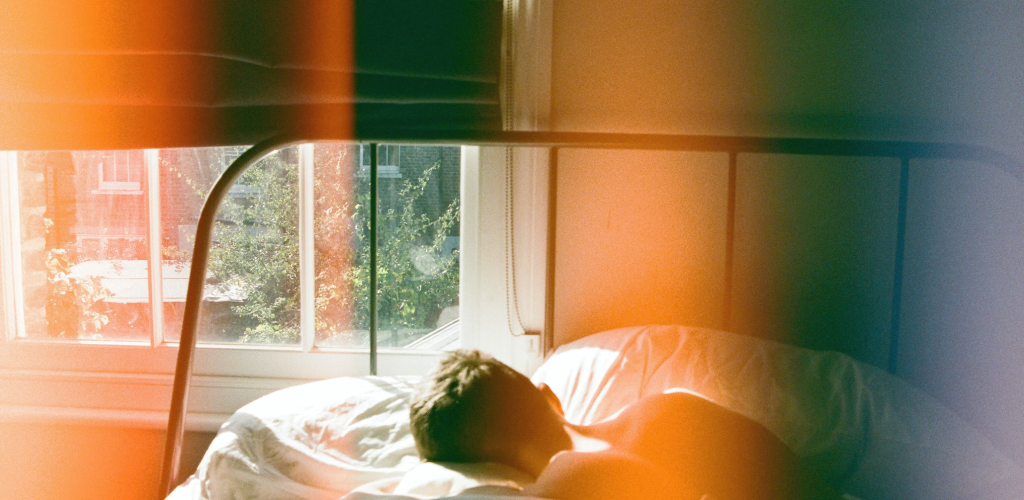
Public Speaking and Performance Anxiety: Your Path to Confident…
Public Speaking? Ahh, dread the thought! The sweaty palms, the racing heart, the mind going blank. But with hypnotherapy, you don’t have to let it hold you back

Insomnia, that energy-sapping state of sleep deprivation, is characterised by difficulty falling or staying asleep, waking up prematurely, or only having ‘non-restorative sleep’ through the night hours.
There are many options out there to help people take steps forward and turn down the volume on those awful nights when deep, restorative sleep has escaped them, but what for those who feel as if they’ve tried them all?
Having painstakingly worked through each and every offering out there it can seem no amount of useful info has had an impact in lulling you into a dozy and drowsy slumber in order to get those necessary Zzzzz’s.
For most, the right way takes some considerable weeding out of the options that don’t work with the hope of being left with a few that do.
Sadly, most people will agree that no ‘one-pill-fits-all’ answer exists, but there is some common ground on which most people can make their bed.
General daytime efforts often gain some ground in the nighttime hours – a little exercise, a healthier diet, some social connection, and even a little meditation can all have their place.
But not all things work for all things work for all people, all of the time.
Not yet, anyway.
Neurologist and global guru-like figure in the brain science world Robert Sapolsky states that meditation is not his thing. In fact he explains that meditation “drives me mad’” – not quite the state, as he says, that will be successful when needing to rest.
So conventional meditation and other forms of sleep induction may be for some, but perhaps not for all, depending on where you are on this journey.
Well, let’s start small.
Wakeful Sleeping presents a unique alternative to traditional sleep-initiating methods and can offer a transformative approach to addressing insomnia and general sleep issues.
Wakeful sleeping is a deliberate state of deep relaxation and awareness maintained throughout the day, the evening, or really at any time.
It is achieved through various techniques, such as guided imagery, body scans, and mindfulness.
In a word, Stopping.
Stopping work, phone use, even conversation.
And yes, I know you’ve heard all about body scanning etc before, but hear me out for a second.
Sometimes, with mindfulness approaches we consider we are aiming to reach the promised land of sunsets and waves ebbing and flowing onto a serene beach as we drift off into the deepest sleep we’ve had in years.
But aiming for the ‘end result’ can have you in the mindset of reaching a goal; sleep, which applies a degree of pressure, and even the smallest amount of pressure is no bedfellow when it comes to a rested state.
Wakeful Sleeping, when done consistently and persistently, is about gently turning down the volume, over days and weeks; by training yourself to meditate one small step at a time.
It’s about going slowly, rather than expecting instant results in the space of a cross-legged 30 minutes whilst burning incense and listening to mating whales (note: unless of course, you like incense and the sound of mating whales, and then you may well have found your golden ticket).
Wakeful Sleeping can be helpful for people who can’t yet meditate – it’s a learning; a small-step process that is simpler and a little easier, and can eventually lead you on to deeper and more restorative states of meditative rest further down the line.
It’s like rehydrating the body of its ability to rest peacefully, one sip at a time.
Wakeful sleeping is not the same as napping or dozing off.
Instead, it is a state of heightened consciousness and presence, characterised by profound relaxation and engaging in a little inner peace.
Now, already I hear the collective bellow of “I don’t have time for that!!”, but as one smart arse once said,
“Take 20 minutes to relax every day, and if you can’t find 20 minutes, take an hour”.
But with Wakeful Sleeping, take 2 minutes, 10 times a day.
Because rest is important.
Increased, practiced rest, can lead to improved sleep.
And this is something you really don’t have time to rush.
Wakeful sleeping offers a number of benefits over time, for those struggling with insomnia, including:
Practising Wakeful Sleeping
To practice wakeful sleeping, find a quiet and comfortable place to sit or lie down.
Close your eyes and take a few deep breaths to relax your body and mind.
Once you are settled, begin to focus on your breath, noticing the rise and fall of your chest or abdomen.
As you breathe, gently allow your thoughts to drift away.
If your mind wanders, simply bring it back to your breath.
Once you have achieved a state of deep relaxation, if you want to continue, begin to explore the different aspects of your wakeful sleeping experience.
Notice the sensations in your body, the sounds around you, and the thoughts and feelings that arise.
Try to be present and mindful of each moment, and try not to judge yourself or attach to any of the thoughts (hard as that is)
Continue practicing wakeful sleeping for as long as you like.
Importantly, there is no right or wrong way to do it.
There is no fail.
Simply experiment and find what works best for you.
And if all you can do is 30 seconds, that’s perfect.
Remember: there is no fail.
And that’s the key.
You can lie, sit, stand if you want (although for safety standing isn’t the greatest option here as you can imagine)
Stare out of a window if you prefer, or close your eyes.
Wakeful Sleeping is about relaxing all the do’s and dont’s of meditation, and only maintaining it for as long as you feel comfortable.
No prescribed ways.
No stopwatch to record times.
The key is ‘often’.
And ‘regularly’
Let me say it again.
Often.
And regularly.
And yes, everything in your body will scream against this.
It’s just not the modern way we are ‘expected’ to live by.
But many times in the day is ideal. You really can’t do it too often.
Keep in mind its purpose; to train the mind and body to relax, but not to achieve a sleep state (at the moment).
After countless bouts of days and weeks (??) of wakeful sleeping, it may be helpful to introduce a deeper level – Sleep Meditation.
Sleep meditation is a complementary practice to wakeful sleeping.
It involves using meditation techniques to promote relaxation and sleep.
Sleep meditation can be practiced in bed before or during wakeful sleep.
To practice sleep meditation, try the following:
For some, a sleep calculator has been a go-to snooze tool that can be used to determine how much sleep you need each night. It takes into account your age, activity level, and other factors to generate a personalised sleep schedule.
Using a sleep calculator can help some people manage their insomnia effectively (but again, experiment, and discard if, after a good length of time, you feel it’s too prescribed for you. note: those who struggle a little with OCD tendencies may be best avoiding this option).
By following a regular(ish) sleep schedule (although ‘schedule’ sounds very dry here, try something more like ‘loose sleep pattern’), and getting a little improved sleep each night, you can begin to increase your sleep quality and duration, which can have a positive impact in reducing your symptoms of insomnia.
Sleep paralysis is a temporary state of inability to move or speak that occurs during the transition between wakefulness and sleep.
For some, it can be accompanied by hallucinations and can be a worrying experience.
Sleep paralysis is relatively common, affecting up to 4% of the population. It is more likely to occur in people with stress, anxiety, and other sleep disorders.
Relationship between sleep paralysis, stress, and insomnia
Stress is a major trigger for sleep paralysis. When we are stressed, our bodies produce hormones that can interfere with sleep. These hormones can make it difficult to fall asleep and stay asleep. They can also make it more likely that we will experience sleep paralysis.
Insomnia is another risk factor for sleep paralysis. People with insomnia are more likely to experience sleep paralysis because they are more likely to have fragmented sleep and wake up frequently during the night.
Hypnotherapy is a therapeutic technique that uses guided imagery and suggestion to alter a person’s state of consciousness. Hypnotherapy has been shown to be effective in treating a variety of conditions, including insomnia and sleep paralysis.
Hypnotherapy can help with sleep disorders by:
Research on hypnotherapy for sleep disorders
A number of studies have demonstrated the efficacy of hypnotherapy for treating sleep disorders. For example, a study published in the journal Sleep Medicine found that hypnotherapy was effective in reducing insomnia symptoms and improving sleep quality in participants with chronic insomnia.
Another study, published in the journal Frontiers in Psychology, found that hypnotherapy was effective in reducing sleep paralysis episodes and improving sleep quality in participants with recurrent sleep paralysis.
Overall, the research suggests that hypnotherapy is a safe and effective treatment for sleep disorders. It can be used to reduce stress and anxiety, promote relaxation and deep sleep, and address the underlying causes of sleep disturbances.
Hypnotherapy Near Me / Hypnotherapist Near Me…
If you are interested in trying hypnotherapy for your sleep disorder, it is important to find a qualified and experienced hypnotherapist. Some companies have insurance options for this provision to help with costs, oand sometimes a personal insurance can cover a portion of the outgoings.
To find someone close by if you want to visit. aclinic, you can always use the old classic ‘Hypnotherapist Near Me’, or ‘Hypnotherapy Near Me’ search terms in trusty old Google, and you will be able to find reviews and testimonials on different hypnotherapy sites. Alternatively, have a look at online hypnotherapy, as this is. a simple way to take hypnotherapy sessions from the comfort of your own home.
Once you have found a few potential hypnotherapists, be sure to schedule a consultation to discuss the practice they run (there are many ‘schools’ of hypnotherapy), and to see whether you get along.
This time will give you a chance to get to know the hypnotherapist a little more, learn about what can be hoped for through taking sessions, and is a time for you to ask any questions you may have.
Wakeful sleeping, sleep meditation, and hypnotherapy are three drug-free, holistic approaches that can help to improve sleep quality and reduce insomnia symptoms.
If you are struggling with insomnia, I encourage you to explore these methods and maybe one or two could help you unlock a new path and improved outcomes.
And who knows, they may just open the door to the best sleep of your life.
References
Spiegel, D. (2013). Hypnosis for insomnia.
In A. Barnes (Ed.), Hypnosis and complementary therapies for pain management (pp. 122-138).
Springer. Morin, C. M., Colecchi, C., O’Brien, E., Buysse, D. J., Bootzin, C. A., Edinger, J. D., … & Espie, C. A. (2006). Insomnia: A clinical guide to assessment and treatment. American Psychological Association.
Schneier, F. R., Papp, L. A., Marshall, R. C., & Spiegel, D. (2009). Hypnosis for recurrent sleep paralysis: A pilot study. Journal of clinical sleep medicine, 5(5), 497-501.
Sun, L., Wang, H., Zhang, L., Li, X., & Wang, Y. (2015). Hypnosis for the treatment of primary insomnia: A meta-analysis of randomized controlled trials. Sleep Medicine, 16(11), 1281-1288.
Websites used to gather information:
National Sleep Foundation: https://www.sleepfoundation.org/
American Psychological Association: https://www.apa.org/

Public Speaking? Ahh, dread the thought! The sweaty palms, the racing heart, the mind going blank. But with hypnotherapy, you don’t have to let it hold you back

Can you show up as your best, most productive self if you’re constantly running on empty – feeling drained, fatigued, overwhelmed? The truth is – you can’t…

If you’ve tried traditional counselling or talking therapy and didn’t feel they clicked, there are other options – counselling through Solution Focused Therapy is one…

Chronic Pain is more than just an annoyance.
It’s a constant, unwelcome companion that can drain energy, disrupt sleep, and leave someone feeling like an imposter camped uncomfortably in their own body…